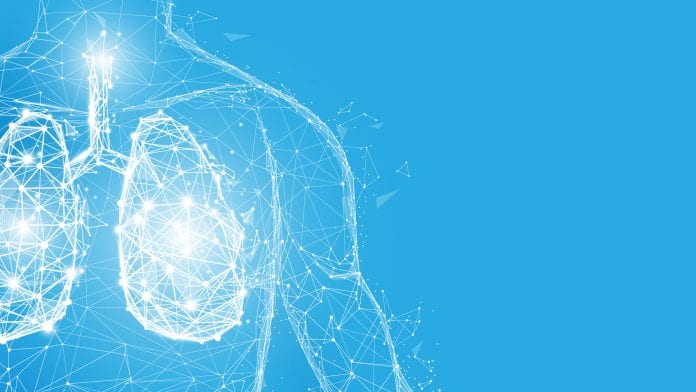
An innovative ‘lung-on-chip’ is providing new insights into the body’s response to early tuberculosis infection and could provide a model for future research into respiratory and other infections.
Findings from the new lung-on-chip model, developed by scientists at the École polytechnique fédérale de Lausanne (EPFL), may contribute to our understanding of what happens during early tuberculosis (TB) infection, and may explain in part why those who smoke or have compromised surfactant functionality have a higher risk of contracting primary or recurrent infection, the researchers say.
The model reveals that respiratory system cells, called alveolar epithelial cells, play an essential role in controlling early TB infection – a disease caused by the bacterium Mycobacterium tuberculosis – by producing a substance called ‘surfactant’. This is a mixture of molecules that reduce the surface tension where air and liquid meet in the lung.
The findings have been published in eLife.
Understanding TB with technology
As one of the most infectious killers on the planet, although affecting people of all ages, TB mostly affects adults, and currently there are vaccines available to this age group. This is partly due to challenges with studying the early stages of infection, which take place when just one or two M. tuberculosis bacteria are deposited deep inside the lung.
Vivek Thacker, a postdoctoral researcher at the McKinney Lab, École polytechnique fédérale de Lausanne (EPFL), Lausanne, Switzerland, said: “We created the lung-on-chip model as a way of studying some of these early events. Previous studies have shown that components of surfactant produced by alveolar epithelial cells can impair bacterial growth, but that the alveolar epithelial cells themselves can allow intracellular bacterial growth. The roles of these cells in early infection are therefore not completely understood.
“We used our model to observe where the sites of first contact are, how M. tuberculosis grows in alveolar epithelial cells compared to bacteria-killing cells called macrophages, and how the production of surfactant affects growth, all while maintaining these cells at the air-liquid interface found in the lung.”
Using the model, the researchers recreated a deficiency in surfactant produced by alveolar epithelial cells and then see how the lung cells respond to early TB infection, revealing that a lack of surfactant results in uncontrolled and rapid bacterial growth in both macrophages and alveolar epithelial cells. They also found that, on the other hand, the presence of surfactant significantly reduces this growth in both cells and, in some cases, prevents it altogether.
Senior author John McKinney, Head of the Laboratory of Microbiology and Microtechnology at EPFL, added: “Our work shines a light on the early events that take place during TB infection and provides a model for scientists to build on for future research into other respiratory infections.
“It also paves the way for experiments that increase the complexity of our model to help understand why some TB lesions progress while others heal, which can occur at the same time in the same patient. This knowledge could one day be harnessed to develop effective new interventions against TB and other diseases.”
The authors are also currently using a human lung-on-chip model to study how lungs may respond to a low-dose infection and inoculation of SARS-CoV-2, which causes COVID-19.









